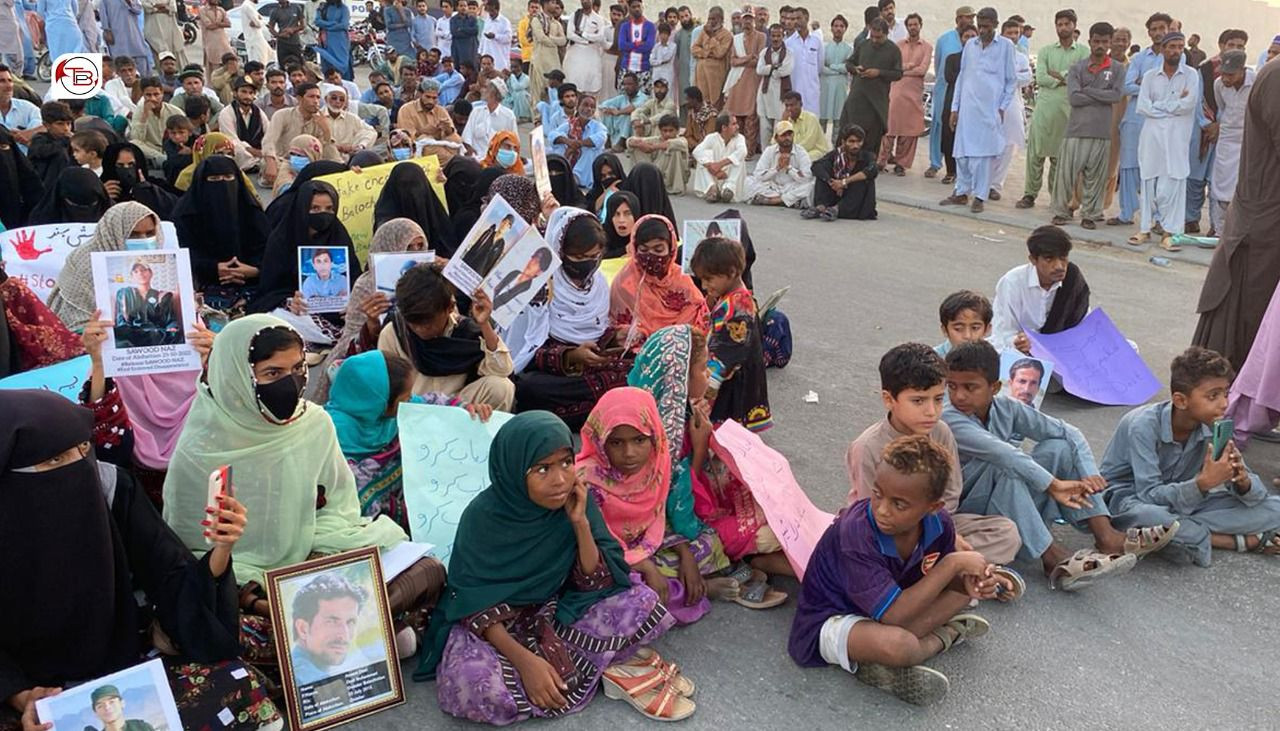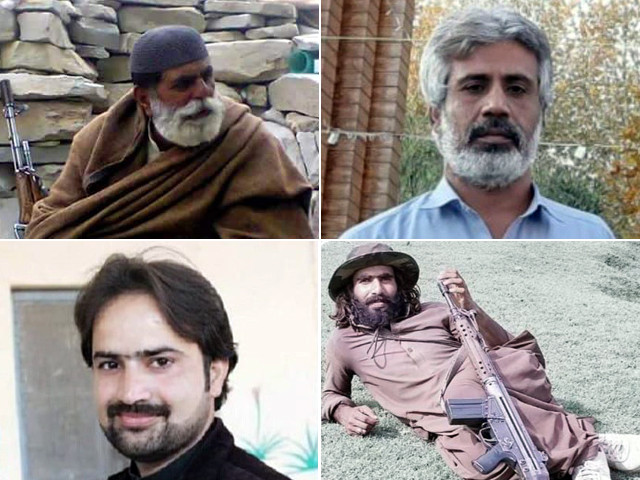Balochistan has been in the throes of a strange mix of violence for decades. Partly, this violence has been fuelled by religious and sectarian extremism, and partly by a chronic sense of deprivation among its impoverished population exploited by the hostile agencies to keep the province in turmoil in their attempts to destabilise Pakistan. The military effort to stamp out this potpourri of violence has cost the nation dearly – both in men and treasure. But the worst sufferers have been the people of Balochistan.
Violent groups cashed in on the situation to peddle an anti-state narrative and enlist recruits for a bloody insurgency, which has waned and waxed over the years. In the murk of this insurgency, Baloch youths started disappearing in what is now known as ‘enforced disappearances’. An accusatory finger was pointed at the state’s counterinsurgency operations. The issue of ‘enforced disappearances’ has haunted every government, riled up Baloch nationalists and rights campaigners, and provided grist to the propaganda mill of the insurgents who used it to sully Pakistan’s global image.
The state has long been in denial. But you cannot shut your eyes to the reality.

The state needs to be forthcoming, at least in order to blunt the propaganda.
“My heart beats with the missing persons and their families,” says Lt Gen Asif Ghafoor, Commander Balochistan Corps. “I will make sure no one is picked up without rhyme and reason,” he says. “I’ll make sure that if there is evidence [of supporting and abetting insurgency] against someone, they are detained through the proper legal procedure,” he says as he assures full support to the families of the missing persons. “I stand with them.”
What is ‘enforced disappearance’?
According to the Office of the UN Human Right Commissioner, “an enforced disappearance is considered to be the arrest, detention, abduction or any other form of deprivation of liberty by agents of the state or by persons or groups of persons acting with the authorisation, support or acquiescence of the state, followed by a refusal to acknowledge the deprivation of liberty or by concealment of the fate or whereabouts of the disappeared person, which place such a person outside the protection of the law.”
The International Commission for Jurists claims that “hundreds, if not thousands, of people continue to be ‘missing’ in Pakistan following their apparent arrest or abduction by or with complicity of the state. The UN Working Group on Enforced Disappearance has described a ‘culture of entrenched impunity’ regarding the practice.

A missing persons protest held in Balochistan.
The figures may be a little exaggerated.
The Commission of Inquiry on Enforced Disappearances set up by the Pakistan government in 2011 has confirmed 8,500 missing persons since its inception. Of them, one-third (3,285) have returned home, the Commission stated in a report submitted in the Islamabad High Court in March 2022. The Commission has disposed of 6,214 cases, while 2,249 are still under investigation.
More than meets the eye
But not every missing person is attributable to the state. Some might have joined the Baloch insurgents, or crossed over to hide in Afghanistan or join the TTP, or might have died fighting alongside either of the two.
And we have reason to believe that.
In July 2022, five terrorists of the banned Baloch Liberation Army (BLA) were killed in a security operation to rescue hostages in Ziarat. Among the dead were those listed as “missing” by activists and families, including Saleem Baloch and Shahzad Baloch. A BLA propaganda video shot before but released after Saleem’s death showed him attacking security forces along with other terrorists. And Shahzad turned out to be an urban commander of BLA who recruited for the group in colleges and universities.
Another man came forward to claim one of those identified as dead “BLA terrorists” was actually his “missing” cousin, Engineer Zaheer Ahmed. But his claim was debunked when Zaheer resurfaced and appeared before the media to tell his real story. Zaheer was in fact detained in Iran when he, along with fellow would-be economic migrants, crossed over from Pakistan en route to Europe.
Similarly, top BLA commanders Aslam Baloch, alias Achhu, Mir Abdul Nabi Bangulzai, and Raziq Madai, alias Engineer, were killed in attacks in southern and northeastern Afghanistan in 2018, 2021, and 2022, respectively. Gulzar Imam, alias Shamby, one of the founders of Baloch Nationalist Army, was listed as “missing” until earlier this month when his group confirmed that he was arrested in an intelligence-based operation by the security forces.
Non-kinetic approach
Every “missing” person cannot be attributable to the state. But those in the state custody should be accounted for. In a June 2022 judgment, the Islamabad High Court ruled that “when there is sufficient evidence to conclude that it is, prima facie, a case of ‘enforced disappearance,’ it becomes an obligation of the state and all its organs to trace the disappeared citizen.”
Lt Gen Ghafoor, who took over the command of Balochistan Corps in August 2022, believes in a non-kinetic approach in lead with minimum essential unavoidable kinetic part to shape environment for non-kinetic prong because he believes the use of military force alone could not bring lasting peace in the restive province. “The issue of Balochistan could only be resolved through an inclusive national political process,” he says. “For this purpose, the ‘annoyed Baloch leaders’ must join the political mainstream.”
Balochistan, a sparsely populated, mountainous, desert region, is rich in mineral resources, but remains dirt-poor and least developed of all the provinces of Pakistan. How little of Balochistan’s wealth of copper, gold, gas and coal deposits comes their way has been fuelling Baloch resentment.

Lt Gen Ghafoor believes that the people of Balochistan need a healing touch. They need love, respect, and mollification to mitigate their sense of deprivation and alienation. They must be given their rights and an opportunity to progress socially and economically for durable peace and national harmony in the province. “The state has to provide education and job opportunities to the Baloch youth,” he says.
Quetta was peppered with military and paramilitary checkpoints and heavily-armed security personnel manning them would only instill fear among young schoolchildren driving past them while commuting to school and back home. Lt Gen Ghafoor wants to change this atmosphere of fear. And that, he believes, is only possible by making the people feel they live in normalcy.
“We have already handed over 50 per cent of military checkpoints to police,” corps commander says. The people of Balochistan have lived under the shadow of the gun for too long. “I want to take them out of the shadow of the gun,” he says while sharing his vision of a normal, peaceful Balochistan.
According to local journalists, until recently it used to be quite a hassle to travel on Quetta’s roads. Not anymore. Now, people don’t have to suffer the inconvenience of stopping at ubiquitous security checkpoints to prove their identity. The roads that were earlier off-limit to civilians have now been reopened for their convenience. Entry into Quetta garrison has also been made easy for everyone. All you need to do now to enter the garrison is show your national identity card.
Lt Gen Ghafoor believes it’s a war of narratives which has to be won through a non-kinetic approach, by deoxygenating the insurgents’ narrative.
He vows no mercy for the enemies of the state. However, he says the military force would be used sparingly in a targeted manner, against those who challenge the state writ, undermine peace, and perpetrate terrorism in the province. Insurgents are fringe elements. They operate away from population centres out of their hideouts in the mountains.
This may not be easy, but the corps commander is confident that he can turn around things and change entrenched perception about Balochistan. “The people of Balochistan will feel the difference, Inshallah,” he adds. “They will feel that the FC and army are there for their security, and not to cause any trouble.”
Although terrorists have targeted communities indiscriminately, the ethnic Hazaras have been hit the hardest. Hundreds of Hazaras, a minority Shia community of Afghan origin, have been killed in terrorist attacks perpetrated mainly by sectarian terrorist groups Lashkar-e-Jhangvi and the Khorasan franchise of Islamic State.
The fear led to ghettoization of the community. Hazara Town, or Hazarganji, is a lower- to middle-income area on the western outskirts of Quetta with a population of over 2 million, of which an estimated two-thirds are Hazaras. They weren’t safe there either as sectarian terrorists unleashed some of the deadliest attacks on the community in Hazarganji. They lived in fear for a long time, but the situation appears to have changed considerably.
Lt Gen Ghafoor got a police post set up at Hazara Town — something the community had long sought for their security. The post, manned by around a dozen personnel, including an inspector, will function until a permanent police station is established. “Steps are being taken together with the provincial government and administration to improve the Hazara community’s security,” he says.
He also promises to facilitate Shia pilgrims travelling to Iran and Iraq for religious pilgrimages through Taftan border. In particular, he pledges to further strengthen the security of convoys of pilgrims and addressing their accommodation issues at the border.
